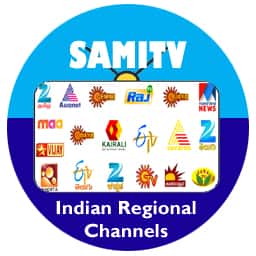Live TV Streaming on 2G, 3G & 4G Android Mobile Stream
In today’s fast-paced world, the convenience of accessing entertainment on-the-go has become increasingly important. With the rise of mobile technology, live TV streaming on Android devices has gained immense popularity. This article aims to explore how users can enjoy live TV streaming on their Android mobile devices, regardless of whether they are connected to 2G, 3G, or 4G networks.
Understanding Compatibility with 2G, 3G, and 4G Networks
Before delving into live TV streaming on Android devices, it’s essential to understand the differences between 2G, 3G, and 4G networks. While 2G offers basic voice and text capabilities, 3G introduced higher data speeds, enabling multimedia services such as video calling and internet browsing. The advent of 4G further improved data speeds, facilitating smoother streaming experiences.
Choosing the Right Mobile Device for Live TV Streaming
Selecting the right mobile device is crucial for an optimal live TV streaming experience. Factors such as processor speed, RAM, and display quality play a significant role. It’s advisable to opt for devices with higher specifications to ensure seamless streaming without lags or interruptions.
Exploring Live TV Streaming Apps for Android
Several apps cater to live TV streaming on Android devices, offering a wide range of channels and content. Popular options include YouTube TV, Hulu + Live TV, and Sling TV. These apps provide access to live sports, news, entertainment, and more, making them ideal for users looking to watch their favorite shows on the go.
Tips for Enhancing Live TV Streaming Experience
To enhance the live TV streaming experience on Android devices, users can take several measures. Firstly, ensuring a stable internet connection is essential. Additionally, adjusting video quality settings based on network speed can help minimize buffering and improve overall streaming quality.
Overcoming Challenges of Streaming on Slower Networks
Streaming live TV on slower networks like 2G and 3G can pose challenges due to limited bandwidth. However, by optimizing settings and utilizing compression techniques, users can mitigate buffering issues and enjoy uninterrupted viewing experiences.
Future Trends in Mobile Live TV Streaming
With the ongoing advancements in technology, the future of mobile live TV streaming looks promising. The imminent rollout of 5G networks promises even faster speeds and lower latency, further enhancing the streaming experience. Additionally, innovations such as augmented reality (AR) and virtual reality (VR) could revolutionize how users consume live content on their mobile devices.
Conclusion
In conclusion, live TV streaming on Android mobile devices offers unparalleled convenience and flexibility. By understanding network compatibility, choosing the right device, and leveraging the available apps and technologies, users can enjoy seamless streaming experiences anywhere, anytime.
FAQs
Can I stream live TV on any Android device?
While most Android devices support live TV streaming, it’s recommended to use devices with higher specifications for optimal performance.
Do I need a high-speed internet connection for live TV streaming?
While a high-speed internet connection is preferable for the best streaming experience, it’s possible to stream on slower networks with some adjustments.
Are there any subscription fees associated with live TV streaming apps?
Yes, most live TV streaming apps require a subscription fee, although some offer free trials or ad-supported options.
Can I record live TV shows for later viewing on Android devices?
Some live TV streaming apps offer DVR (Digital Video Recorder) functionality, allowing users to record shows for later viewing.
How can I troubleshoot buffering issues while streaming live TV?
To minimize buffering, try lowering the video quality settings, closing background apps, and ensuring a stable internet connection.


 ISLAMIC TV
ISLAMIC TV PALESTINE TV
PALESTINE TV ONLY PAKISTAN
ONLY PAKISTAN INDIAN TV
INDIAN TV RASI CHANNELS
RASI CHANNELS JIO TV CHANNELS
JIO TV CHANNELS VOOT CHANNELS
VOOT CHANNELS SONYLIV CHANNELS
SONYLIV CHANNELS DISCOVERY+ CHANNELS
DISCOVERY+ CHANNELS INDIAN REGIONAL TV
INDIAN REGIONAL TV